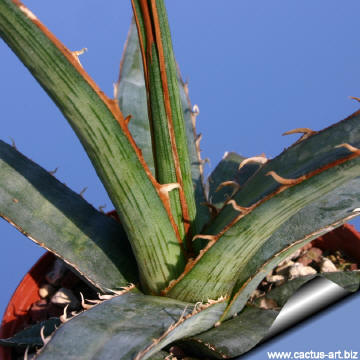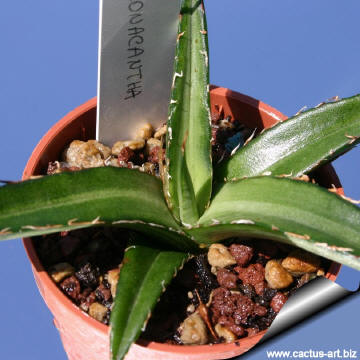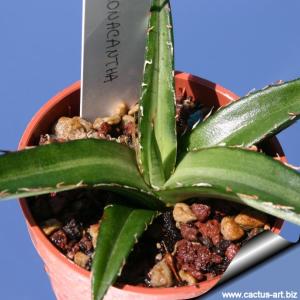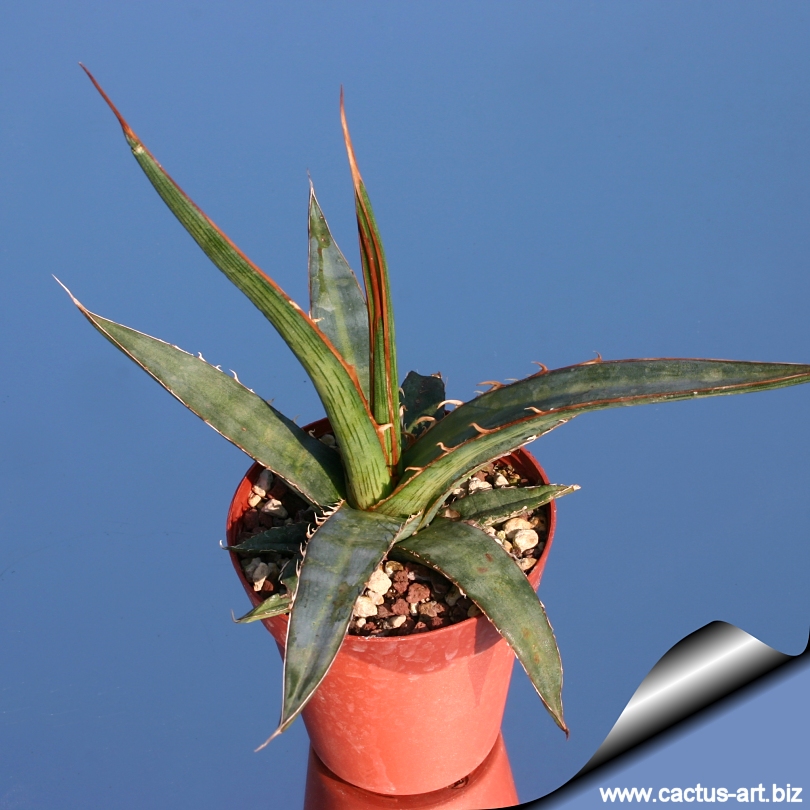-
x
Descrizione
Questa agave ha foglie ondulate con imponenti indentare papiracee sui margini, e sembrano grosse lame di una sega da legno. Family: Agavaceae Scientific Name: Agave xylonacantha Salm-Dyck Etymology: The species name "xylonacantha" means "with woody spines" in a fitting reference to the broad wood colored spines. One of the previous used names of this plant, Agave carchariodonta was in reference to the teeth (odonta) of the Great White Shark, Carcharodon carcharias.
| |
| Description: The plant generally produces a single rosette but some plants will produce offsets with time. Each rosette grows up to 30 cm tall and 120 cm wide and has an open, free form and produces relatively few leaves compared to other agaves. This plant is related to A. lophantha. The leaf margins with large flattened, several tipped, teeth are like an exaggeration of the forms known of A. lophantha. | |
 |  |
Cultivation: A. xylonacantha is a stunning specimen plant for containers or a well drained spot in the garden noted as rare in cultivation. It tend to be slow grower, but worth the effort. Grow them in porous soil with adequate drainage. They do well in full sun or a lightly shaded area. Water thoroughly when soil is dry to the touch. In winter watering this plant can be done once every 1-2 months, there is no need to mist the leaves. It is theoretically hardy to -3° C, particularly when dry but it is best to avoid severe freezing temperatures. Heat Tolerance: Excellent Propagation: Relatively easy to propagate by seeds or by suckers (if available) Remove the basal suckers in spring or summer and let the cuttings dry for a few days before inserting in compost.. only problem is the logistics of getting to the suckers - very sharp spines and suckers usually right up against, or underneath the mother plant. Use: These striking plants are wonderful when used for accent or simply to provide some all year round foliage colour and often used in a pot as a patio plant, they make an eye-catching statement and along with other evergreen plants in pots, can be moved around to change the scenery or position to give more shelter. | |


